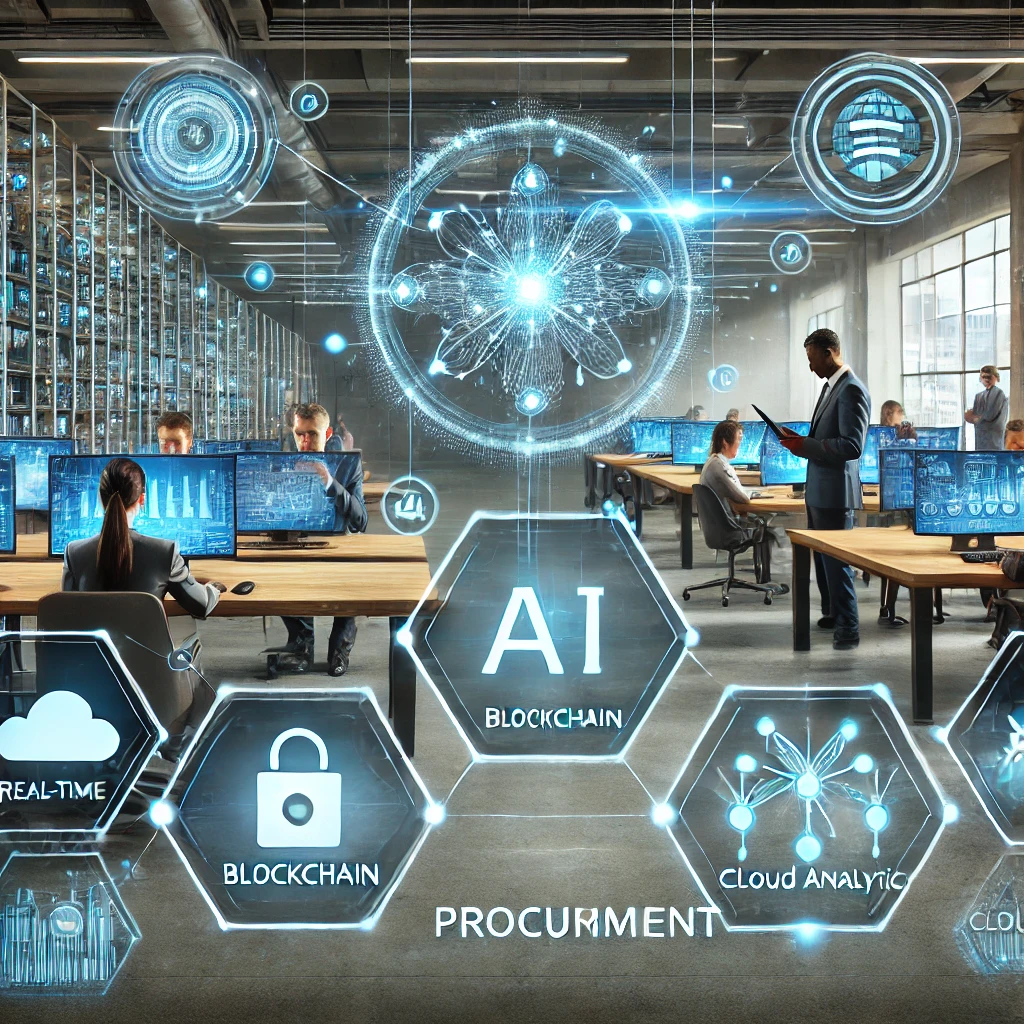Procurement has evolved from a back-office function into a strategic driver of business success. In today’s global and highly competitive markets, the integration of technology in procurement processes has become essential. This blog explores how technology is revolutionizing procurement, enhancing efficiency, and improving decision-making.
Transforming Traditional Procurement Processes
Traditional procurement involved manual processes, extensive paperwork, and time-consuming negotiations. These methods often led to inefficiencies, errors, and a lack of visibility. Technology has streamlined these operations through automation, enabling procurement professionals to focus on strategic tasks.
Automation of Routine Tasks: Software tools handle repetitive activities like purchase order creation, invoice processing, and supplier communication. This reduces errors and saves time.
E-Procurement Systems: Digital platforms centralize procurement activities, making the process faster and more transparent.
Enhancing Decision-Making with Data Analytics
Data is at the core of modern procurement strategies. Technology enables organizations to collect, analyze, and interpret data for better decision-making.
Spend Analytics: Tools like Power BI and Tableau help analyze spending patterns, identify cost-saving opportunities, and optimize budgets.
Predictive Analytics: AI-driven insights forecast demand, monitor supplier performance, and predict potential disruptions.
Supplier Relationship Management (SRM): Technology tracks supplier performance metrics, ensuring compliance and fostering better partnerships.
Driving Efficiency with Artificial Intelligence and Machine Learning
AI and ML technologies are transforming procurement by automating complex decision-making processes and providing actionable insights.
AI-Powered Sourcing: AI identifies suitable suppliers, evaluates bids, and negotiates contracts using predefined criteria.
Chatbots and Virtual Assistants: These assist in supplier inquiries, document retrieval, and tracking order statuses, enhancing communication efficiency.
Risk Mitigation: ML algorithms analyze geopolitical, financial, and environmental data to predict risks and suggest mitigation strategies.
Blockchain for Transparency and Trust
Blockchain technology ensures transparency and trust in procurement processes. Its decentralized nature provides an immutable record of transactions, making it valuable for auditing and compliance.
Smart Contracts: Blockchain automates contract execution based on pre-agreed terms, reducing disputes and delays.
Traceability: Especially useful in industries like food and pharmaceuticals, blockchain tracks the entire supply chain, ensuring authenticity and compliance.
Enhancing Collaboration Through Cloud Technology
Cloud-based procurement solutions offer real-time collaboration and accessibility. These platforms break down silos, allowing cross-functional teams to work seamlessly.
Centralized Data Storage: Stakeholders can access procurement documents and data from anywhere, enabling informed decisions.
Collaboration Tools: Platforms like SAP Ariba and Coupa facilitate collaboration between buyers and suppliers, streamlining workflows.
IoT and Procurement
The Internet of Things (IoT) is adding a new dimension to procurement. IoT devices provide real-time data, which can be used for better inventory management and demand planning.
Smart Inventory Management: IoT sensors monitor stock levels and trigger automatic reordering when thresholds are met.
Real-Time Monitoring: Track shipments and ensure timely delivery through connected devices.
Sustainability and Green Procurement
Technology is helping organizations achieve sustainability goals through green procurement practices.
Eco-Friendly Sourcing: Tools identify suppliers with sustainable practices and assess the environmental impact of products.
Carbon Footprint Tracking: Digital solutions calculate and monitor emissions throughout the supply chain.
Challenges in Adopting Procurement Technology
Despite its benefits, adopting technology in procurement comes with challenges:
- High Implementation Costs: Advanced tools and systems require significant investment.
- Change Management: Training employees to use new systems can be time-consuming.
- Data Security Risks: Digital systems are susceptible to cyberattacks, necessitating robust security measures.
The Future of Procurement Technology
The future of procurement lies in continuous innovation. Technologies like 5G, quantum computing, and advanced AI will further enhance the field. These advancements promise even greater efficiency, transparency, and sustainability.
Conclusion
Technology has transformed procurement into a strategic function that drives business success. By leveraging tools like AI, blockchain, and IoT, organizations can streamline processes, make informed decisions, and achieve sustainability goals. However, embracing these technologies requires a strategic approach, robust training programs, and a commitment to continuous improvement.




